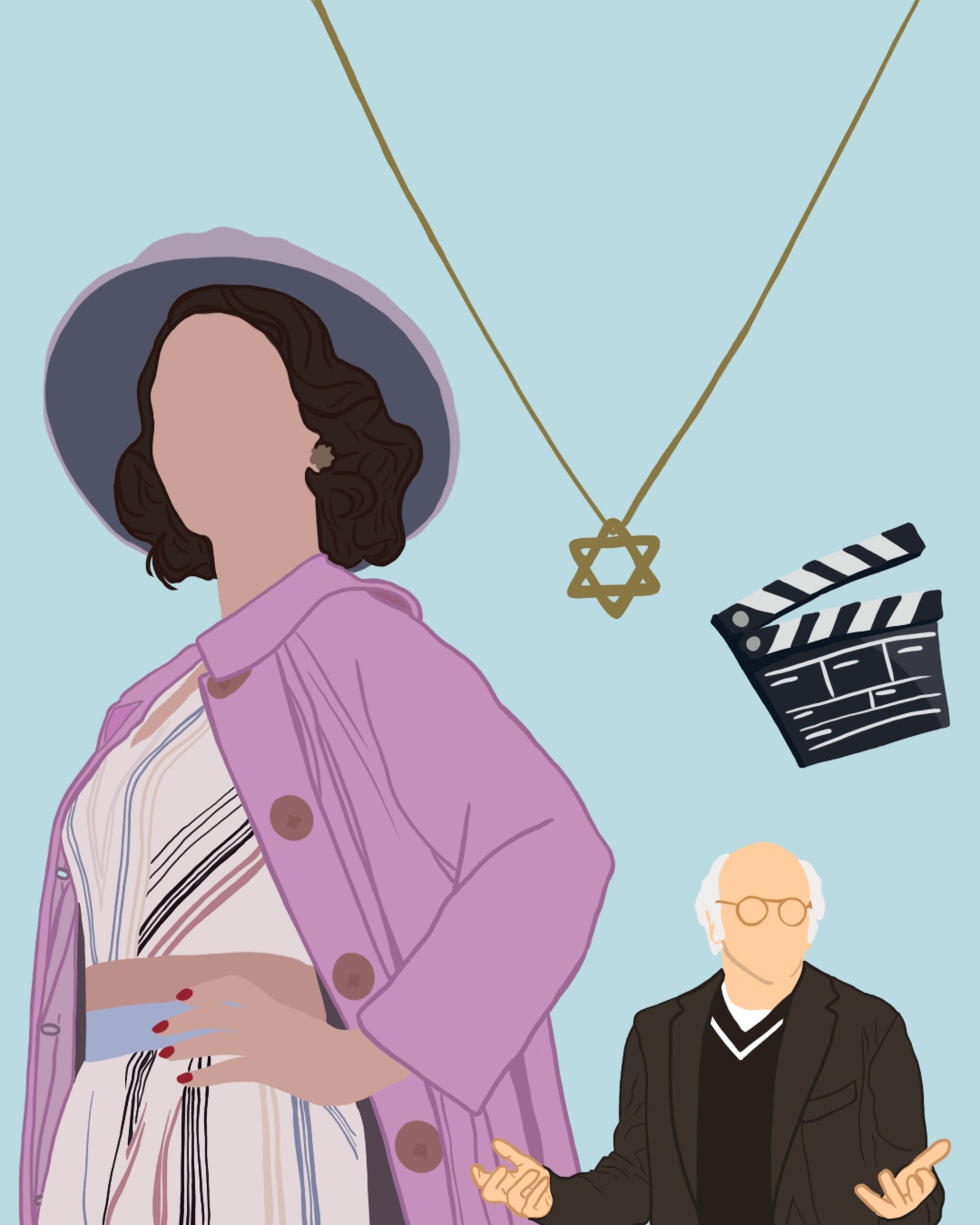Midge Maisel, Schmitt, and Larry David have all found their ways into our homes. I watched Seinfeld as a kid on my television and streamed “The Marvelous Mrs. Maisel” and “New Girl” on my laptop, like many others. I learned words like “schvitz,” not from my family, but during an episode of Comedians in Cars Getting Coffee. I couldn’t stop laughing at the family portrayed in The Marvelous Mrs. Maisel, partially because it felt so much like my own.
Television shows like The Marvelous Mrs. Maisel and Curb Your Enthusiasm have been some of my favorite things to watch because I find them to be so relatable and could imagine my family going through the same experiences. Whether I’m watching the “Soup Nazi” for the fiftieth time or re-starting Mrs. Maisel, these shows always manage to make me laugh. Overall, the increasing on-screen representation of proudly Jewish people, either through storylines or fictional characters, is refreshing and demonstrates a shift from previous moments in Hollywood.
Many of Hollywood’s founding players––Sam Goldwyn (co-founder of MGM), Carl Laemmle (founder of Universal), Adolph Zukor (co-founder of Paramount)––were Jewish, and six of the eight major studios were “Jewishly controlled.”
These Jewish founders immigrated from Eastern Europe and had a “hunger for assimilation…in the face of resistance and exclusion,” according to film analysis and critic Neil Gabler. For example, country clubs banned and excluded Jewish members. As a result, these producers tried to hide their identities.
David Selznick, producer of Gone With The Wind, separated his Jewish and American identities by telling screenwriter Ben Hecht “I’m an American and not a Jew.” Henry Cohn, founder of Columbia Pictures, avoided synagogues and had a nondenominational funeral. Despite creating the foundations for the movie industry, these figures still felt the need to disassociate from their Jewish identities, leading to a lack of on-screen representation of Jewish people.
However, there was not a complete lack of depiction, as seen through the 1927 release of The Jazz Singer, which tells the story of Jakie Rabinowitz, who goes against his father’s wish to become a Cantor. After World War II other films with Jewish representation would be released, like Gentleman’s Agreement in 1947, which portrays anti-semitism within American society. There are other portrayals as well, such as Funny Girl in 1968, which stars Barbara Streisand, and Steven Spielberg’s film Schindler’s List in 1994.
Yet, the depiction of Jewish people apart from a “singular presence” comes with the rise of Seinfeld, according to Jeffery Shandler. Previously, Jews were depicted as a singular, central character, but with the development of Seinfeld, Jewish people began appearing within an ensemble across multiple characters.
“Seinfeld does really, wonderfully, perverse things with Jewishness and the show has characters that we are told aren’t Jews, and yet they are loaded with Jewish markers,” Shandler said in an interview.
Overall, the ongoing representation of Jewish figures on my screen is always welcome. The feeling of watching a character represent my culture is appreciated and makes communities feel heard. Whether I’m watching Seinfeld or New Girl, these shows always manage to make me smile.

